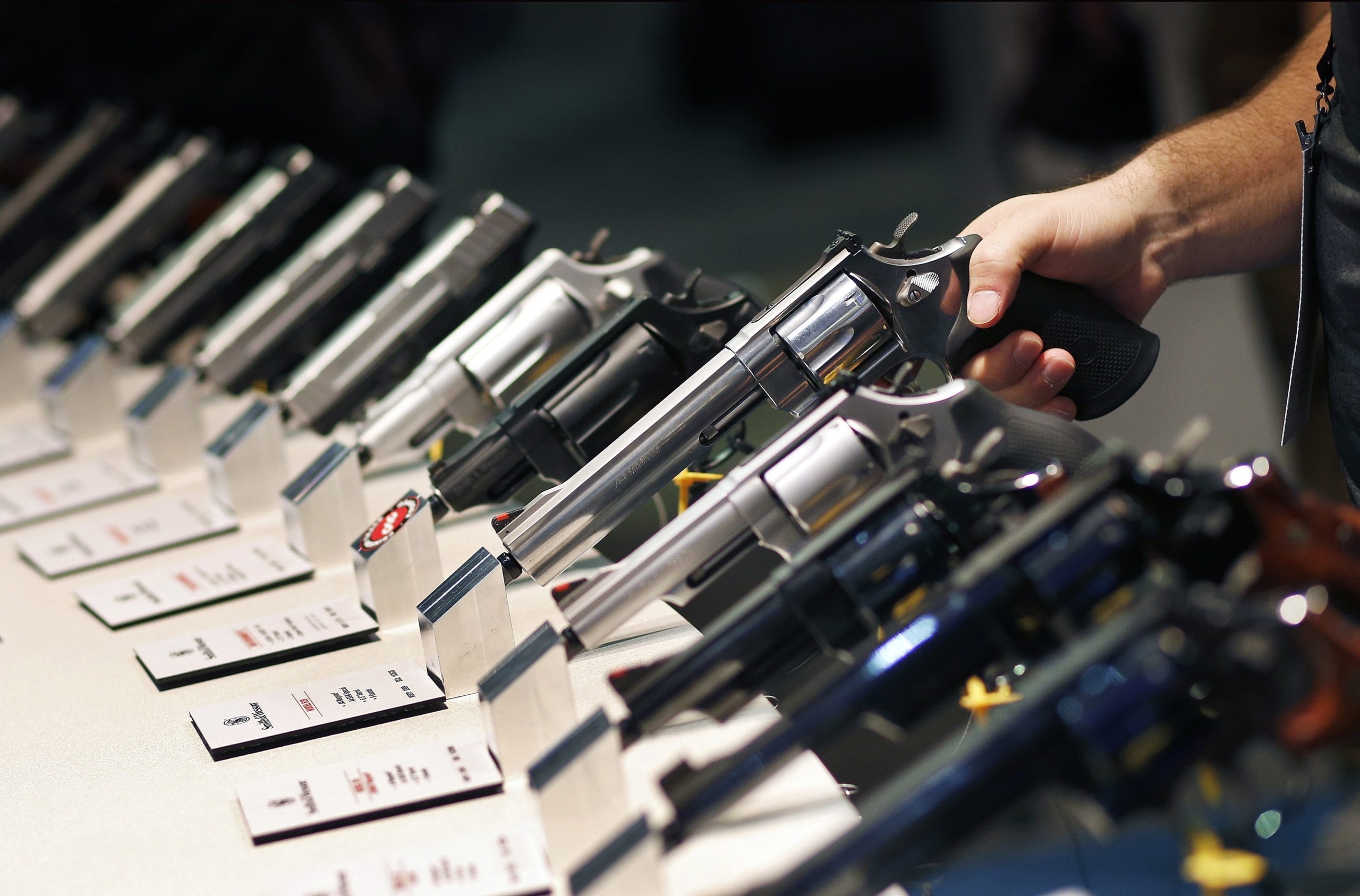Last month, we relaunched Ask The Trace, a question-and-answer series about gun violence in the U.S. As always, if you have a burning question about the issue we cover, please follow this link. The Trace’s journalists will review your query and may answer it in an article like this one.
The first reader question we’re tackling this year: How does gun violence in the U.S. compare to gun violence in other countries?
A dig through The Trace’s archives shows that we examined the issue in 2018, following the publication of a study from the Institute for Health Metrics and Evaluation, a global research center at the University of Washington. The study created a country-by-country ranking of gun homicides and suicides, and explored possible drivers of the violence in each country.
Among the main findings: America’s gun homicide rate was more than double the average for all countries, and was at the top of the list for countries with high Socio-demographic Index (SDI) scores, a summary measure of a country’s health outcomes. When it came to gun suicides, the U.S. was by far the global leader. Despite accounting for only 4 percent of the global population, America was responsible for more than a third of the world’s firearm suicides.
The original study used cause-of-death data, supplemented with statistical modeling, to estimate firearm mortality across 195 countries and territories. The estimates showed that the death toll from guns surpassed that from war and terrorism nearly every year since 1990.
For this story, we revisited the data used to create that global ranking, and found that three years later, very little has changed. Americans are still significantly more likely to die by gun: 11.1 out of every 100,000 Americans were killed by firearms in 2019. That’s more than triple the global rate of 3.0.
Here’s an updated chart, showing how U.S. murder and suicide rates compare to other countries.
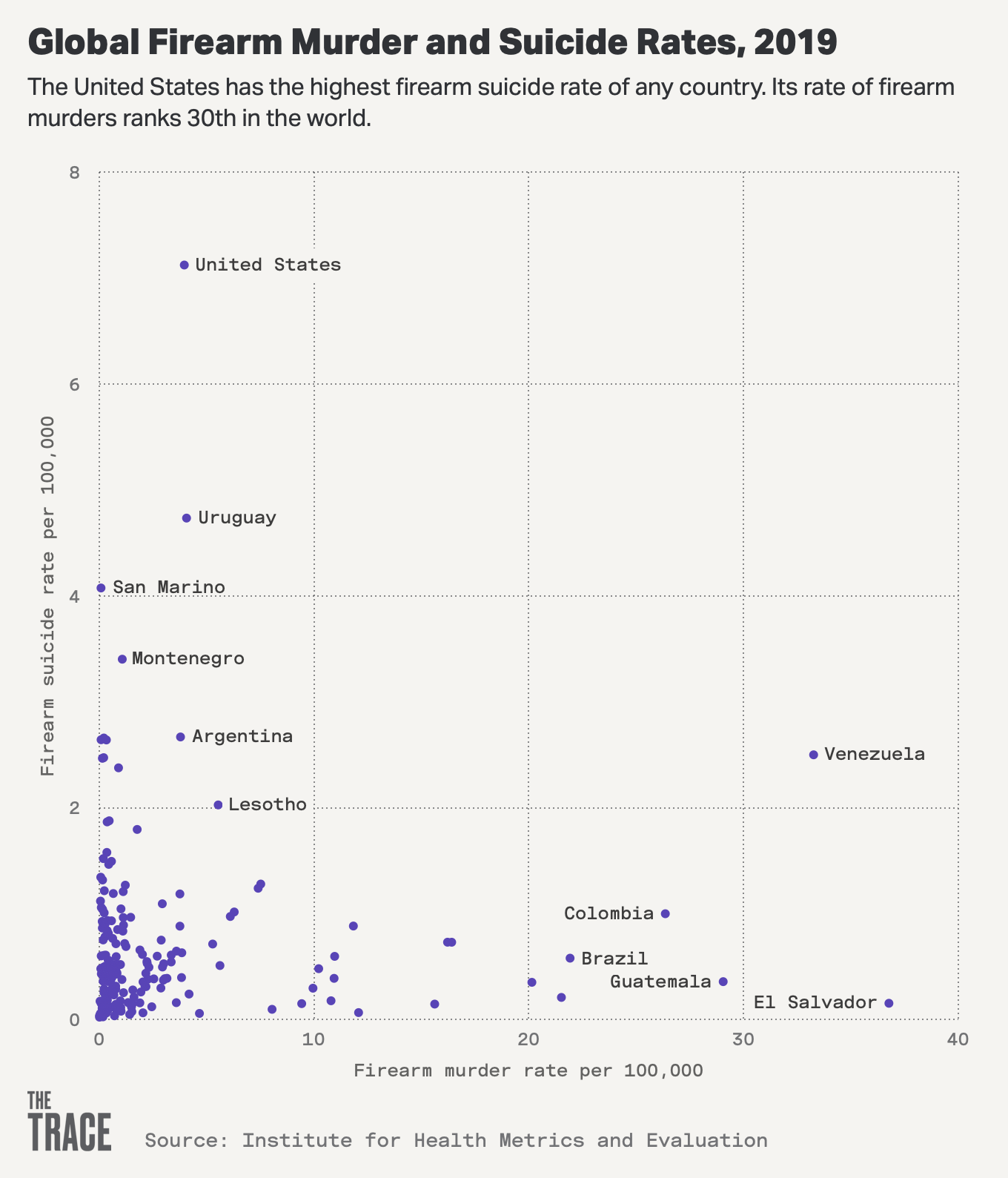
As the chart shows, the American gun suicide rate is exceedingly high. Roughly seven out of every 10 gun fatalities are self-inflicted in the U.S., amounting to a gun suicide rate that sets the U.S. apart on the global stage. No other country compared.
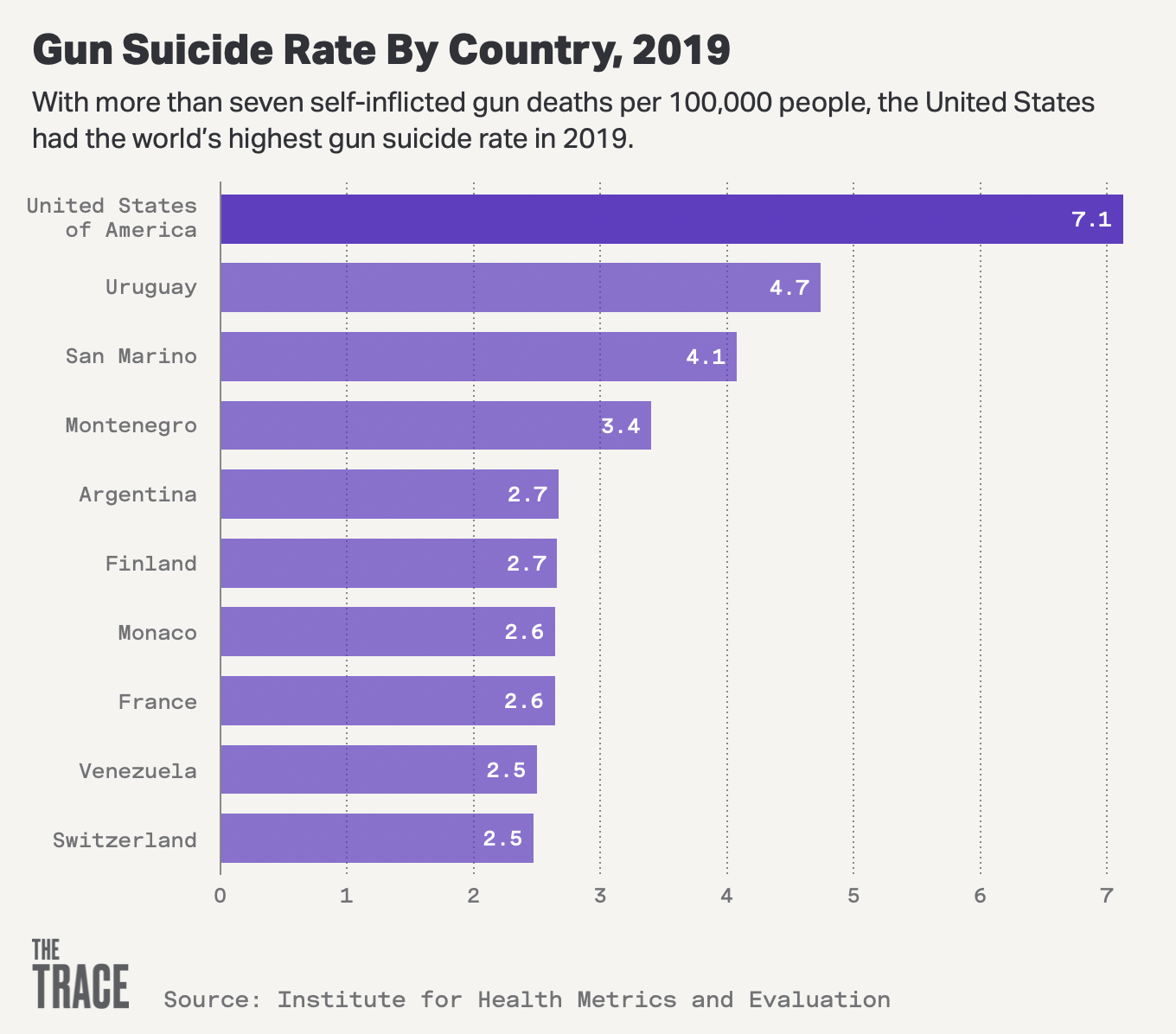
There were 13,000 firearm murders in the U.S. in 2019, according to IHME — about 7 percent of all the murders counted in its database of more than 200 countries. That works out to roughly four in every 100,000 Americans dying in a gun-related homicide, the 30th highest rate in the world. Many of the countries with higher per-capita murders are major sites of drug production or trafficking, which the researchers in the IMHE study identified as a significant factor influencing a country’s rate of gun murders.
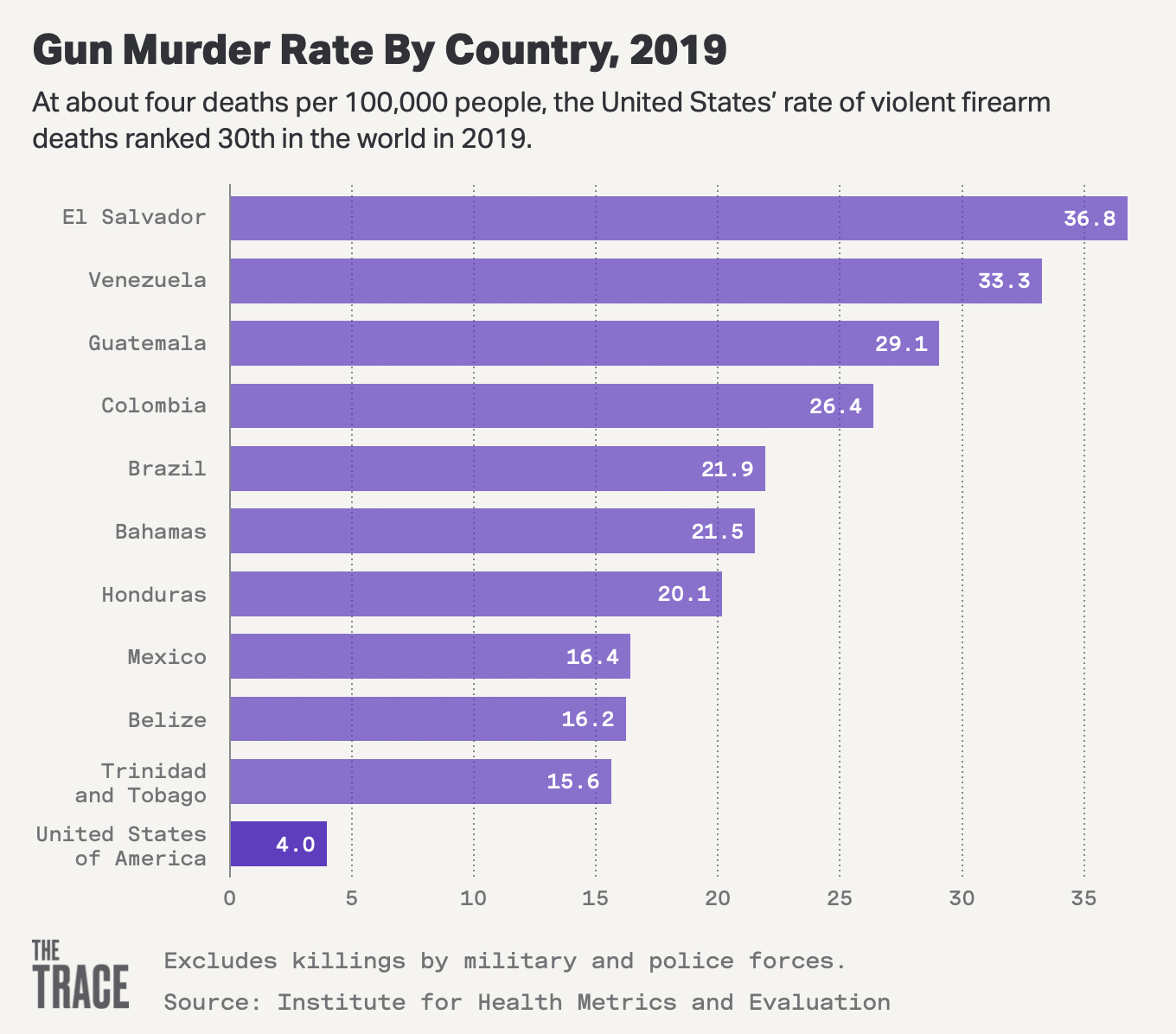
When the set of countries is narrowed to those with high scores on the SDI index, though, the U.S. is firmly in the top spot. The index is a spectrum of development that accounts for a country’s income per capita, average educational attainment, and fertility rates. Residents of countries with higher scores generally report better well-being and lower levels of violence.
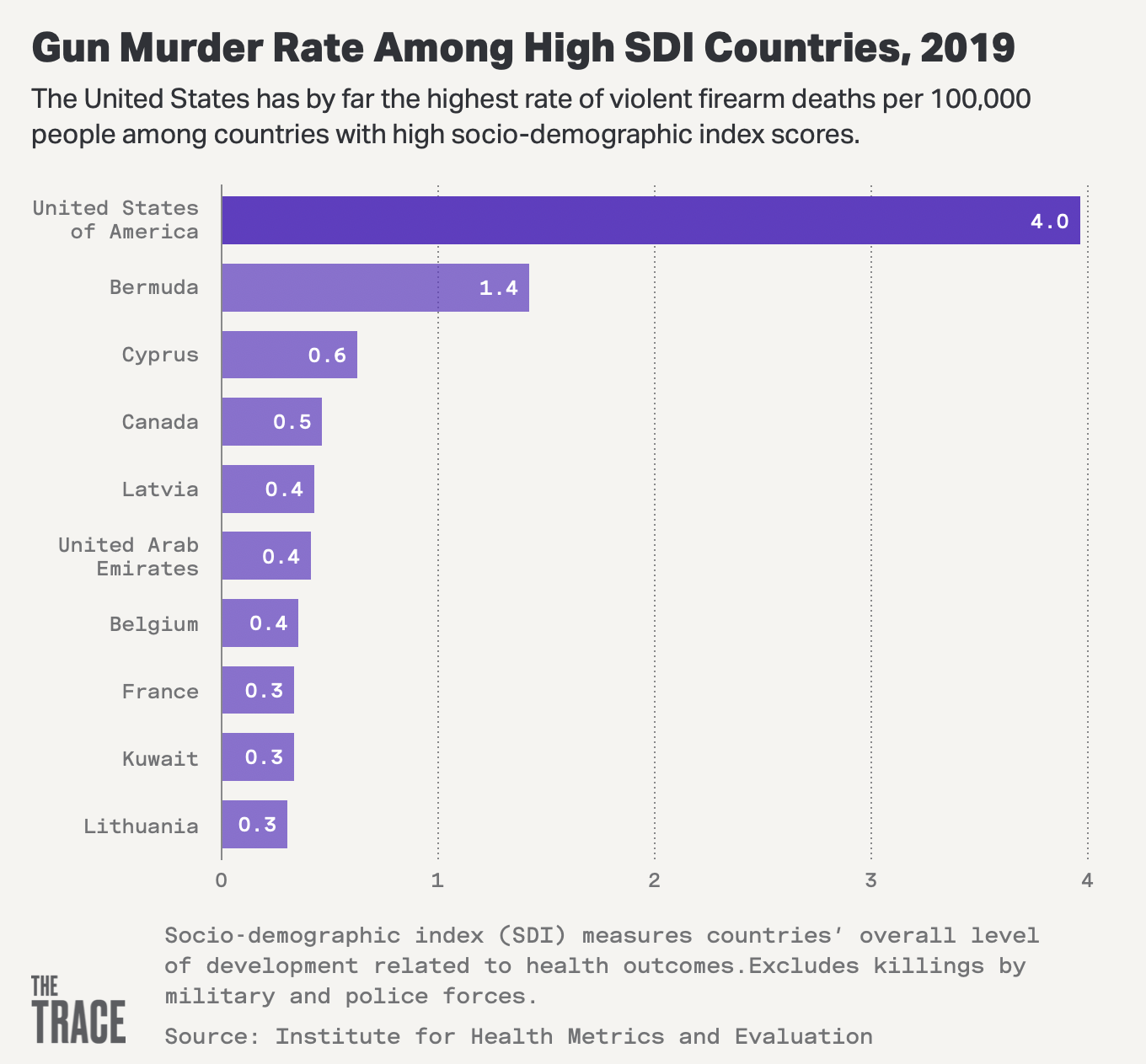
According to the researchers, an extraordinarily high rate of gun ownership in the U.S. has contributed to the prevalence of violence here. To compare countries’ gun ownership rates, researchers in the original study assigned each nation a score based on figures from the Small Arms Survey, the country’s ratio of firearm suicides to all suicides (a common proxy for firearm availability), and other data sources. The United States received the maximum score of 100. No other country scored above 50.
This gap has likely yawned in the years since the study was published. Starting in 2020, the United States entered a dizzying upswing in gun-buying, spurred in part by social unrest from the pandemic. Nine of the top 10 highest months for gun sales in United States history came in 2020 and 2021, including the top three spots.
Just as past research has shown that states with more gun owners also see more firearm deaths, the study found that the same holds true for countries. The authors suggested that limiting the availability of guns can be an effective life-saving measure.
“Efforts to reduce the number of firearms in homes and supporting secure storage of existing firearms,” they wrote, “can … [limit] immediate access to a means of harm that generally does not allow opportunity for second thoughts.”
